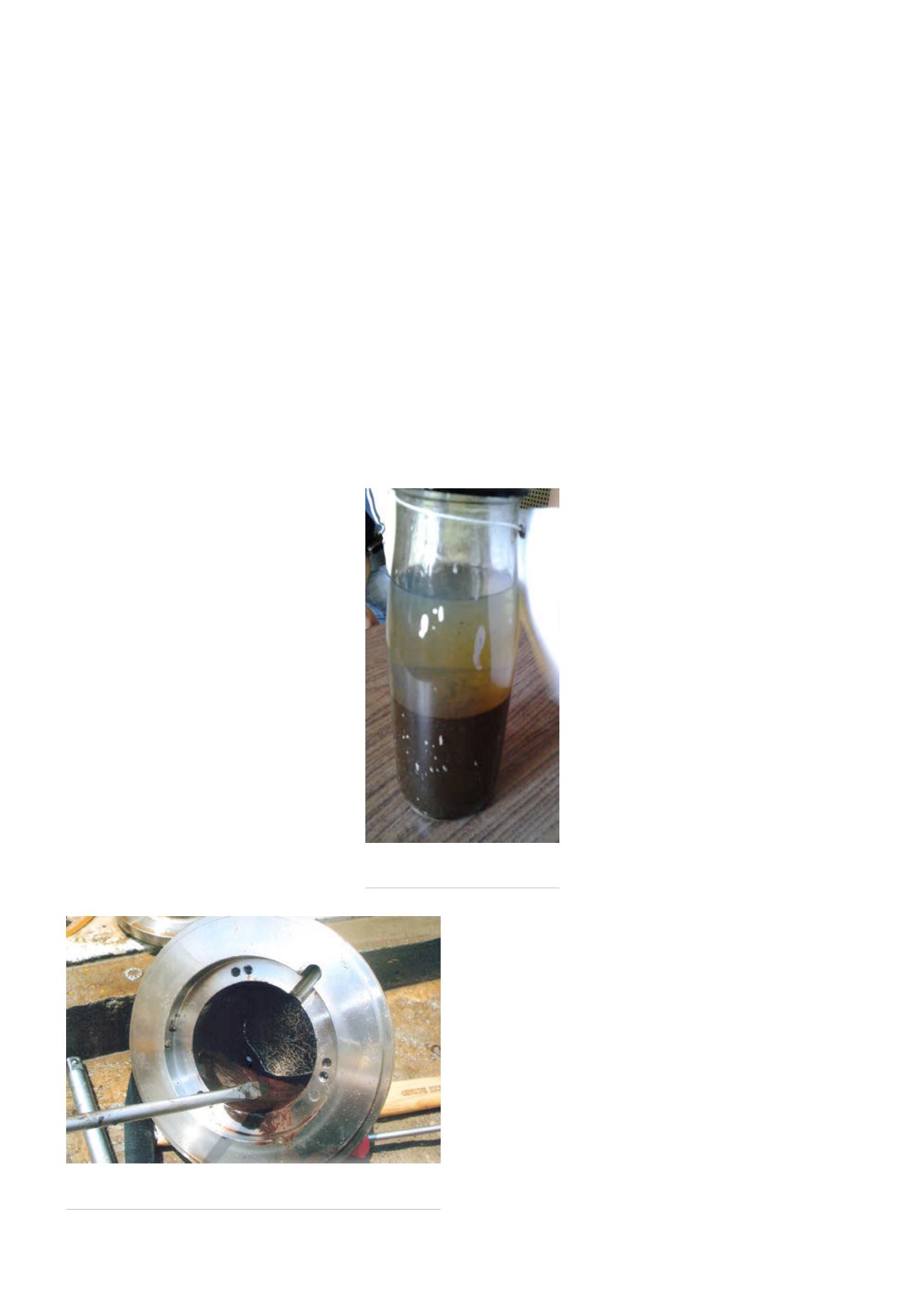
The need to find an alternative to magnetic drive
technology on this application was first prompted by
premature wear and pump failures associated with the
ingress of fine particles of abrasive pipeline scale, resulting
in serious damage to the gear pumps.
The pumps replacing them are Hydra-Cell diaphragm
pumps manufactured by Wanner Engineering. Embodying a
unique seal-less design concept, they can handle abrasive
liquids without difficulty. They have proved themselves
able to satisfy all system parameters while working 24 hr/d
for long periods in remote locations with little or no
maintenance.
Practise makes perfect
Analysing petroleum products on the move through
pipelines and associated facilities is a widespread practice
in the oil industry. Typically, its objectives are to identify
the liquid in transit, determine its properties and in
many cases verify its compliance with
international fuel standards or their local
variants.
Among the properties targeted,
density and sulfur content are particularly
significant. The density of a petroleum
liquid is a reliable indicator of its type,
grade and quality, while the sulfur content
of petroleum fuels is a major environmental
concern; expressed in parts per million, it
correlates with the maximum sulfur content
level permitted under a given fuel standard.
India employs a 2-tier system enabling
the government to prioritise at each stage
of a progressively applied programme by
setting lower permitted parts per million
limits for selected big cities than those
applying to the country at large.
Collecting samples
Before liquid in the pipeline can be
analysed, samples must first be taken
from the line. Both operations are continuous. In practice,
sampling and analysis of liquids are combined into single
dedicated systems
There are two main ways in which liquid samples can be
collected from a pipeline: the inline probe and the bypass
or ‘fast’ loop.
The inlet diameter of a bypass loop is several times
larger than that of the inline probe – an economical but
more limiting method of sample extraction. The loop is
not only less prone to block, it takes larger samples more
representative of flow in the pipeline at sampling point
and more suited to simultaneous analysis of various liquid
properties.
Liquid for sampling in a bypass loop system must be
independently pumped, requiring a small high-pressure
pump integrated into the loop immediately ahead of the
analyser system itself. Its job is to deliver a continuous
supply of sampled liquid to the analyser and complete the
loop by returning it to the main line at a
pressure high enough to override pipeline
pressure.
Velocity and pressure
Flow velocity through the system should
not differ widely from that of flow in the
main pipeline. At a lower speed, associated
with pressure losses during transfer
through pipework of much smaller bore,
the properties of the liquid can change.
One authority – ASTM D4177-95 (2010)
– suggests that average velocity through
the sample loop should be near to the
maximum average velocity expected in the
main pipeline, and proposes a minimum
value.
The pump is a critical component of
sampling/analysis systems. The demands
placed on it can be severe. It must be
flexible in operation, able to pump over a
wide range of pressures Pumping must be
continuous and leak-free, sustaining 24 hr/d
performance reliably over long periods of
duty.
India: pumps and pipelines
The petroleum liquids handled by pipelines and associated
facilities in India are thin and non-lubricating (many pumps
have seals that rely on the pumped liquid to lubricate
them. Drying out will cause rapid wear).
Some Indian pipelines carry fine particles of abrasive
scale picked up from older sections of the network. Many
sampling stations are remotely sited and unmanned.
Frequent, regular pump maintenance is impractical.
But the need to sample and analyse petroleum products
remains, and the level of these activities continually
rises. An underlying growth factor is the accelerating
increase in fuel consumption, led by road users. Between
2003 and 2013, India’s vehicle population rose from
Figure 1.
Scale contamination in
a liquid petroleum product.
Figure 2.
Scale deposits reach magnetic ring of a magnetic
drive centrifugal pump.
64
World Pipelines
/
MARCH 2016


